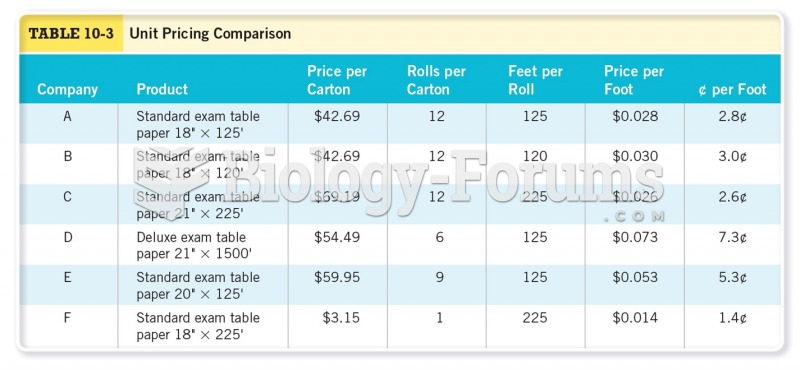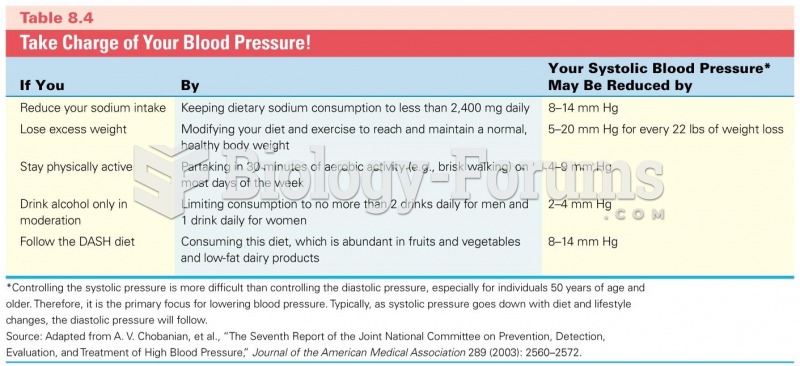Answer to Question 1
4
Rationale:
1. Although this client is uncomfortable, shortness of breath often accompanies polyhydramnios. It can require removal of some amniotic fluid through amniocentesis to facilitate comfort, but this is not a life-threatening emergency.
2. Renal agenesis will lead to oligohydramnios because of the lack of fetal urine production. This client will be grieving, but is not experiencing physical complications.
3. Leakage of clear fluid is normal; leaking for several hours can lead to oligohydramnios, which in turn can lead to variable decelerations. This client might be experiencing a complication, but is a lower priority than the client with the possibility of a prolapsed cord.
4. Active labor in a preterm multip with the presenting part high in the pelvis is at high risk for prolapse of the cord when the membranes rupture. This client should be on bedrest until the membranes rupture and the presenting part has descended well into the pelvis. This client is at highest risk for physical complication (cord prolapse), and therefore is the highest priority.
Answer to Question 2
4
Rationale:
1. Although it is important to assess amniotic fluid for odors, checking the cervix to assess for cord prolapse is a higher priority.
2. This assessment is not called for at this time.
3. Pain medication is a low priority at this time.
4. Checking the cervix will determine whether the cord prolapsed when the membranes ruptured. A prolapsed cord leads to rapid onset of fetal hypoxia, which can lead to fetal death within minutes if not treated.







